
Table of Contents[Hide][Show]
Cerebellar Hypoplasia (CH) in dogs is a neurologic condition that puppies can develop during gestation. It’s a relatively uncommon disorder, but an important one to know because the symptoms mimic other puppy diseases.
CH happens when a part of the brain, called the cerebellum, doesn’t fully develop. It causes dogs to have mobility problems. Puppies with the disorder walk with exaggerated, uncoordinated steps that cause stumbles and falls. Some pups have head tremors and problems with eye coordination, as well.
The good news about CH is the condition doesn’t get worse over time. Puppies don’t even realize they have a disability and most lead long and happy lives.
Why some dogs develop cerebellar hypoplasia
CH is an unusual disease because dogs can contract it in two entirely different ways. It considered to be an inherited disorder by a small group of dog breeds. Puppies and kittens can also develop CH through environmental substances that attack the mother dog or cat while they’re pregnant.
These substances can be: toxins, poisons, poor nutrition, an infection and even vaccinations the mother received.
In each case, the cerebellum is damaged and never fully matures.
“The cerebellum is responsible for the control and co-ordination of voluntary movement and posture of your dog.” –
Dog Listener
Here are the dog breeds prone to inheriting CH
Airedales
Boston terriers
Bull terriers
Chow chows
Irish setters
Symptoms of cerebellar hypoplasia in dogs
Puppies born with CH don’t show symptoms until they’re about 6 weeks old. Kittens, on the other hand, show signs soon after they’re born.
These symptoms include:
Wobbly and unsteady walking
Balance problems
Head tremors
Swaying of the body
Standing with their legs wide apart
Dancing eyes – Pets have trouble focusing on objects in front of them
One kitten’s journey with CH
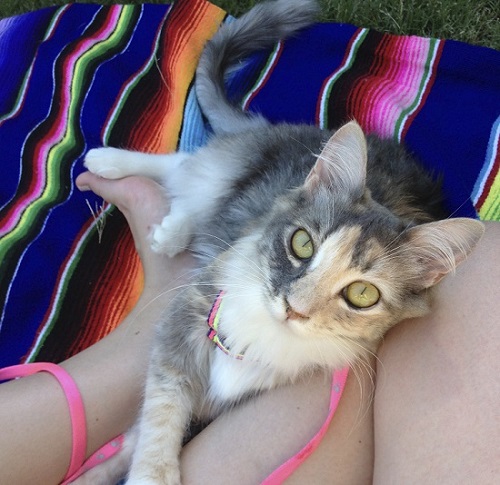
A while back I had the pleasure of interviewing Emily Hall. She’s runs a website for felines with special needs called Kitty Cat Chronicles.
When I talked with her, it had been a year since her youngest of five cats, Sophie, had joined the family. Sophie was born with cerebral hypoplasia.
Here’s how Emily described her kitten’s life:
“Sophie is considered to have a mild-moderate form of CH, which means she can get around pretty well and can eat and use the litter box just fine; she just stumbles sometimes, walks a little funny, and has trouble jumping. When she does jump, she can get a surprising amount of air, but she doesn’t have a whole lot of control over where she lands.
All of those issues aside, she is one of the most happy-go-lucky animals I’ve ever met.
When we first adopted her, she fell over in the litter box a lot. We had to give her baths almost daily, sometimes multiple times a day, because she would fall over in the box and make big messes. If we knew she was heading to the litter box, we would follow her and hold her up while she went to the bathroom to keep her from falling over. If she wanted up on the couch, she had to climb, or we would pick her up. When she wanted up on our bed, we would pick her up and put her there.
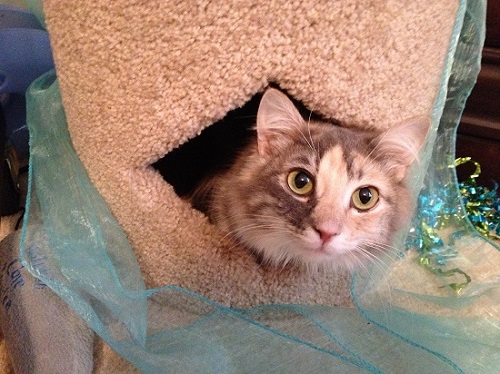
Today, she can go in the litter box on her own every time – she has figured out how to lean up against the wall to hold herself up. Sophie can jump up onto the couch with (almost) no trouble. She can jump up onto the bed and l climb the stairs!
I’m not saying she can do any of these things perfectly or gracefully. What I’m saying is she has figured out how to do so many things that she couldn’t do before, things that most kitties can do just fine.
Sophie has taught my husband and me so much about life. She has trouble with a lot of things that “normal” cats have no trouble with at all. She falls, stumbles, trips over her own feet, and can’t hold her head still. But despite all of that, our kitten loves every second of life and never lets her disability get in the way. Sophie always seems to have a smile on her face, even when she wipes out while running down the hallway. When she falls, she ALWAYS gets right back up like nothing happened. My kitten doesn’t notice that she’s “different.”
Sophie has never once let her disability stop her from doing something she wanted to do. She just goes for it, whatever it is. And eventually, she accomplishes her goal. I admire her, and I think we could all learn something from her determination and bravery. Not to mention, she is one of the loveliest and snuggliest kitties around.”
How veterinarians make a diagnosis

Your vet will likely do a complete physical exam and a neurological assessment. They’ll take into consideration how old your puppy is, the symptoms they show and the breed. An MRI (magnetic resonance imaging) might also be ordered so your vet can rule out other diseases.
As with most neurologic conditions, CH is diagnosed by eliminating disorders that have similar symptoms. This is extremely important because cerebellar hypoplasia resembles other more life-threatening diseases.
The biggest difference to keep in mind is that CH doesn’t get worse with age. The symptoms you see in your puppy today will be the same ones they’ll have in the future. If your puppy is getting worse, it’s important to report it to your vet.

Get the Essential Guide
The Essential Guide of Products for Handicapped Dogs e-book is a labor of love for me. I wrote it to answer your most pressing questions about where to find the best products for your wheelchair dog. You’ll find products you didn’t know existed and each will improve your dog’s quality of life. Print a copy and keep it by your side.
Deadly diseases cerebellar hypoplasia mimics
Cerebellar Abiotrophy – This is a progressive and terminal brain illness with symptoms similar to CH. Dogs lose balance and coordination and have poor control over their muscles. Cerebellar abiotrophy develops in the cerebellum, like CH, but the disease continues to get worse as cells in the brain die. Ultimately dogs lose their ability to walk, swallow and bark.
Hepatic Encephalopathy – The serious nature of this condition is due to a build-up of toxins in the brain because the liver stops working normally. The early signs look like those of CH. Dogs have head tremors, stagger when they walk and have a fixed gaze. It’s important to rule out this disorder because it can be life-threatening.
Distemper – This viral disease can also look like CH. Dogs show signs of muscle weakness and are uncoordinated when they walk. This is due to an inflammation in the brain and spinal cord. The difference between the two conditions is that patients with distemper run a fever, are lethargic and have a discharge of mucus in their nose and eyes.
Treatment for cerebellar hypoplasia in dogs
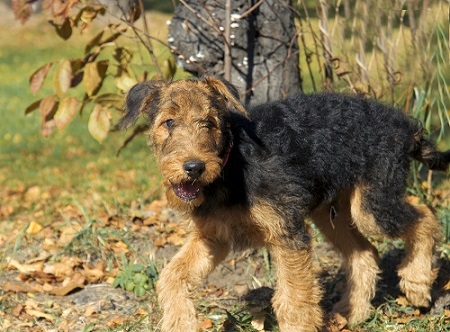
There isn’t a treatment for Cerebellar hypoplasia. With a few lifestyle adjustments, most dogs and cats have happy, quality lives.
The best way to manage their care is to make your home safe to accommodate their physical limitations. That will look different in each household. Some pets will need help getting on and off furniture, going to the bathroom and at mealtime. Other dogs might need assistance going up and down stairs or walking across slick floors.
The problems of their daily lives are fixable and manageable. Ramps can be added for easy access to furniture and beds, handfeeding could be introduced for meals and holding your pet during bathroom breaks could reduce messes.
If you’re thinking about adopting a puppy or kitten with CH, my best advice is to enjoy them and love them for a long time.
Read about other neurologic brain disorders in dogs
Degenerative Myelopathy in Dogs: What You Should Know
Beagle Pain Syndrome: A Rare Disease That Can Cause Paralysis


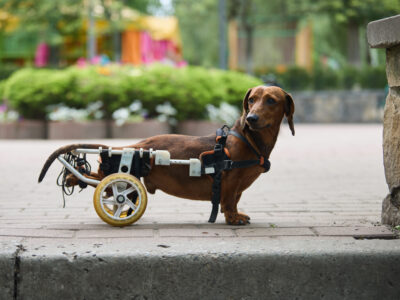
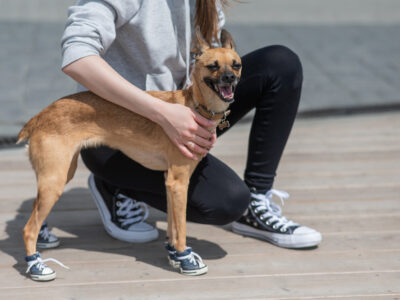

Hello,
I have a friend who is fostering two puppies (about 4 months old) who seem to be displaying symptoms of CH. I was wondering if there is an organization out there that can help my friend with these pups. She is inclined to keep them, but I was hoping you could put her in contact with a group that might help her meet the cost of getting them setup?
If not, I understand. It never hurts to ask : )
They are sweet terrier mix puppies who bright, alert and responsive.
Thank you for your time.
Hi Kelley, Thanks for reaching out for your friend. Typically, dogs with CH don’t need any special treatments or ongoing medical care, other than possible help with mobility. If the rescue group isn’t able to help with a wheelchair (and one is needed), I have a story that lists the groups who loan or donate carts. Here’s the link: https://dogwheelchairlife.com/organizations-that-donate-dog-wheelchairs-to-pet-families/
Other than that, I don’t know of an association that works specifically with CH dogs. That said, the condition doesn’t get worse over time, so if your friend is handling two puppies now, she should do well as they grow up. Best wishes, Sharon
Hi
I do actually know of an organisation/charity in the US that specialises in CH
They’re called the Be Like Josh Foundation … online .. on IG etc
They may be able to help.
I live in the UK with a CH woof too and he’s amazing!!
Best wishes
Luby
Luby, Thank you for this information.